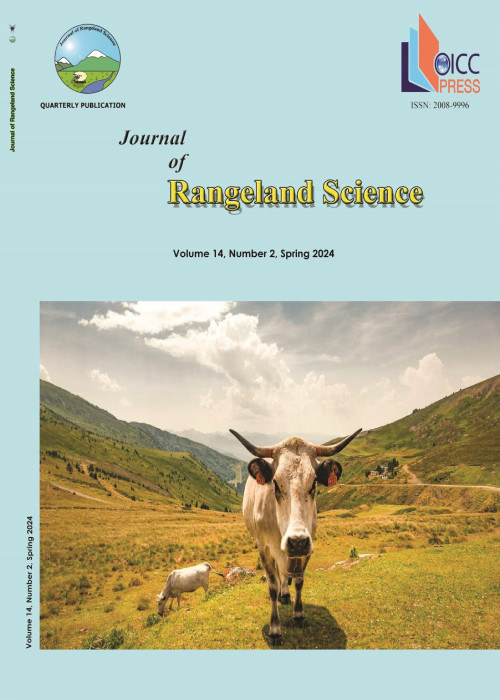Seed Germination of Lilium ledebourii (Baker) Boiss. after Cryopreservation
Author(s):
Abstract:
Seeds or plant organs are usually used as the materials for the long-term cryopreservation. The aim of this study is to investigate the possibility of seed cryopreservation of Lilium ledebourii (Baker) Boiss. as an endemic and endangered species because of genetic erosion. To evaluate seed potentials for the cryopreservation, four treatments including vitrification, 30% glycerol, desiccation and encapsulation-dehydration were applied on seeds before immerging in the liquid nitrogen (-196˚C) for a week. Then, seeds were removed from liquid nitrogen and exposed to heat shock (42˚C water bath), washed with the distilled water and eventually, sown in petri-dishes containing tissue papers. Some criteria including seed germination percent, root and shoot length values, root/shoot length ratio and seed vigor index were recorded and statistically analyzed after four weeks. Data of germination was converted to an arc-sine transformation prior to the analysis of variance. Results showed that germination percentages were 97.50, 97.43, 94.86 and 69.47% for 30%-glycerol, vitrification, desiccation, and encapsulation-dehydration treatments, respectively. They were not significantly different from control seeds (89.33%). On the other hand, other germination attributes of seeds almost showed no significant differences in comparison with control treatment in most treatments. In addition, 30%-glycerol, vitrification and desiccation experienced the highest amounts of germination attributes whereas they showed no significant differences with the control treatment in most qualities. In contrast, the encapsulated seeds showed the lowest amounts in germination indices though they had no significant differences with control treatment (except germination rate). Most of germination attributes of encapsulated seeds were significantly lower than the other cryogenic treatments. Both 30% glycerol and desiccation treatments showed some advantages over vitrification method. However, desiccation was the best treatment because it does not need any chemical substances. It was concluded that the cryopreservation technique is an important approach for the long-term preservation of the seeds of this endangered species.
Keywords:
Language:
English
Published:
Journal of Rangeland Science, Volume:4 Issue: 4, Autumn 2014
Pages:
279 to 286
magiran.com/p1390694
دانلود و مطالعه متن این مقاله با یکی از روشهای زیر امکان پذیر است:
اشتراک شخصی
با عضویت و پرداخت آنلاین حق اشتراک یکساله به مبلغ 1,390,000ريال میتوانید 70 عنوان مطلب دانلود کنید!
اشتراک سازمانی
به کتابخانه دانشگاه یا محل کار خود پیشنهاد کنید تا اشتراک سازمانی این پایگاه را برای دسترسی نامحدود همه کاربران به متن مطالب تهیه نمایند!
توجه!
- حق عضویت دریافتی صرف حمایت از نشریات عضو و نگهداری، تکمیل و توسعه مگیران میشود.
- پرداخت حق اشتراک و دانلود مقالات اجازه بازنشر آن در سایر رسانههای چاپی و دیجیتال را به کاربر نمیدهد.
In order to view content subscription is required
Personal subscription
Subscribe magiran.com for 70 € euros via PayPal and download 70 articles during a year.
Organization subscription
Please contact us to subscribe your university or library for unlimited access!



